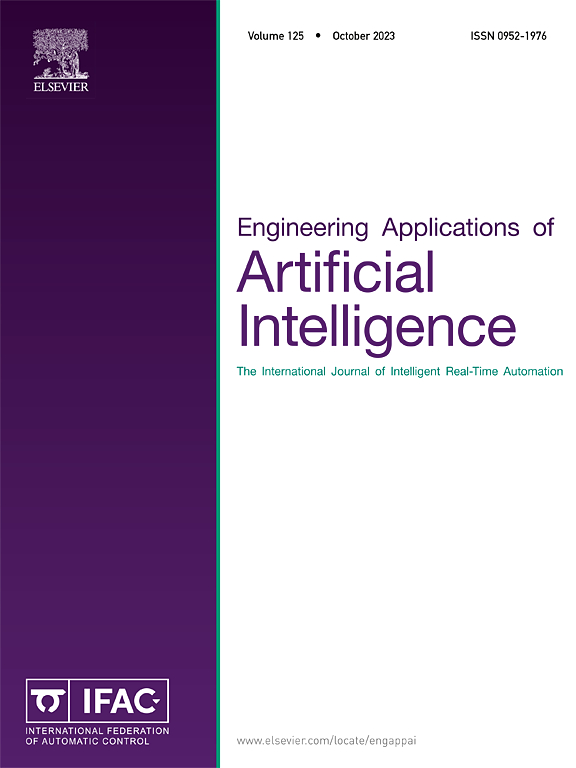基于动态自适应的双目标对比学习零弹故障诊断方法
IF 8
2区 计算机科学
Q1 AUTOMATION & CONTROL SYSTEMS
Engineering Applications of Artificial Intelligence
Pub Date : 2025-07-02
DOI:10.1016/j.engappai.2025.111660
引用次数: 0
摘要
故障类型分类和故障严重程度识别是工业机械故障诊断中两项重要而互补的工作,为工业机械的维护和安全提供必要的信息。然而,工业环境中多变的运行条件使得很难收集到涵盖所有可能类型和严重程度的全面故障数据,从而限制了诊断效率。为了克服这些挑战,提出了一种新的多任务网络方法,在没有新样本的情况下同时检测故障类型和严重程度。判别特征是通过具有特定任务投影头的对比网络提取的,从而能够捕获故障类型和严重程度的不同表示。通过将特征表示与故障类型和严重程度的语义信息对齐,构建了两个零射映射空间来诊断故障类型和严重程度。考虑到故障严重程度对故障类型的依赖性,引入了一种动态自适应优化机制。它增强了对故障严重程度的识别。在两个轴承数据集上对该方法进行了评价。在零射击设置下,故障类型的准确率高达89.4%,故障严重程度的准确率为83.42%,优于基线,显示出强大的现实适用性。本文章由计算机程序翻译,如有差异,请以英文原文为准。
A dual-objective contrastive learning approach with dynamic self-adaption for zero-shot fault diagnosis
Fault type classification and fault severity identification are two critical and complementary tasks in fault diagnosis of industrial machines, providing essential information for the maintenance and safety of the machines. However, variable operating conditions in industrial settings make it hard to collect comprehensive fault data covering all possible types and severities, thereby limiting diagnostic efficiency. To overcome these challenges, a novel multi-task network approach is proposed to detect fault type and severity simultaneously even with zero novel samples. Discriminative features are extracted through a contrastive network with task-specific projection heads, enabling the capture of distinct representations for fault type and severity. Two zero-shot mapping spaces are constructed to diagnose fault types and severity by aligning feature representations with the semantic information of fault types and severity. A dynamic self-adaptation optimization mechanism is introduced considering the dependency of fault severity on fault types. It enhances the identification of fault severity. The proposed method was evaluated on two bearing datasets. It achieved up to 89.4 % accuracy for fault type and 83.42 % for fault severity under zero-shot settings, outperforming baselines and demonstrating strong real-world applicability.
求助全文
通过发布文献求助,成功后即可免费获取论文全文。
去求助
来源期刊

Engineering Applications of Artificial Intelligence
工程技术-工程:电子与电气
CiteScore
9.60
自引率
10.00%
发文量
505
审稿时长
68 days
期刊介绍:
Artificial Intelligence (AI) is pivotal in driving the fourth industrial revolution, witnessing remarkable advancements across various machine learning methodologies. AI techniques have become indispensable tools for practicing engineers, enabling them to tackle previously insurmountable challenges. Engineering Applications of Artificial Intelligence serves as a global platform for the swift dissemination of research elucidating the practical application of AI methods across all engineering disciplines. Submitted papers are expected to present novel aspects of AI utilized in real-world engineering applications, validated using publicly available datasets to ensure the replicability of research outcomes. Join us in exploring the transformative potential of AI in engineering.
 求助内容:
求助内容: 应助结果提醒方式:
应助结果提醒方式:


